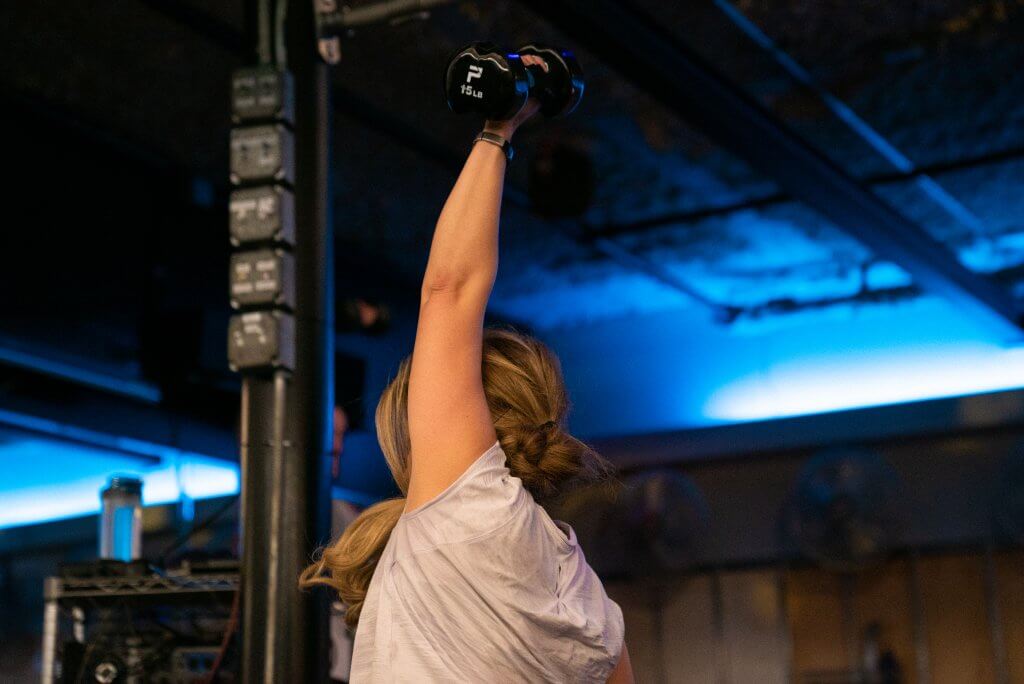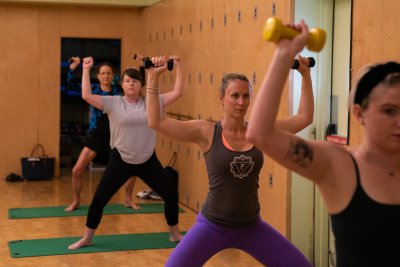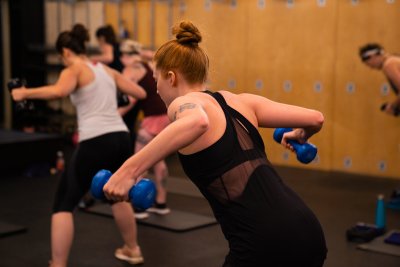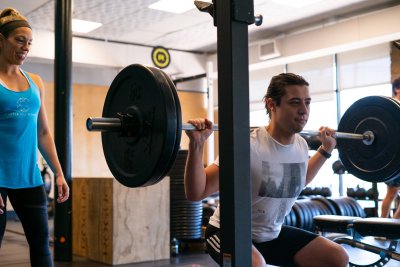
Strength training is a pillar here at Castle Hill Fitness – we offer multiple ways to train on your own throughout our gym, and it’s a common modality used by our trainers and weekly classes. The benefits of weight training are endless, from improved joint flexibility to stronger bones, and it’s an exercise customizable to anyone. For folks new to working with weights, it can be daunting to know where to start!
We’re here to answer one of the most common questions; “what weights should I use?”
Where To Start
Ultimately, what constitutes a “light” or “heavy” weight varies from person to person – everyone has different physical builds and experiences. However, there are rules of thumbs that can guide you in making the right choice for yourself.
The simple answer is lighter for your upper body and heavier for your lower body. The more involved answer, according to Women’s Health Magazine, is your light set should be half the weight of your medium set and your heavy set should weigh about 50% more than your medium set.
Before picking up weights, it’s a good idea to get familiar and confident in exercises without them. Our Training Manager Laurie RK recommends three different methods to prime yourself for weight work:
- Bodyweight exercises. You can ensure your form is correct and that you feel the movements are correct, without risk of straining yourself.
- Gym Equipment. Equipment like the Kinesis machine, a low-impact, pressure-free way to train multiple muscle groups. (We offer free orientations to learn more about using our equipment!)
- Book with a Personal Trainer. The best confidence boost with weights would be to get yourself a trainer! Our experienced professionals will educate you on proper technique, form, and how to reach your goals through personalized weight training routines.
Choosing Your Weights
The type of workout you choose will call for different weights. While we use weights to create a challenge for our muscles to strengthen then, the size requirement will vary by muscle groups and exercises.
Here’s how to know when you should go lighter or heavier.
 | Light WeightsClasses like Barre, Pilates, or Yoga Tone use light weights – the rule of thumb is to go lighter than you think! These classes focus on low weights for higher, faster repetition, interspersed with slow, deliberate moves. “I usually say between 2-4 pounds in each hand. You want to be able to lift to fatigue without losing the form”, recommends Barre Instructor Meadow. In this case, if you used heavier weights with that amount of repetitions, it could be damaging to your body. In general, core exercises are best done with lighter weights to avoid injury to your neck and back. |
 | Light to Medium WeightsGenerally, upper body workouts or movements that rely on a single-joint motion (like a bicep curl) call for lighter to medium weights. Arm exercises would call for lighter, whereas you can go heavier for chest and back exercises. Medium weights are for your full-body workouts. When you’re doing squats or lunges, you have the core to stabilize you and thus you can up your weight.
|
 | Heavy WeightsWhen working major muscle groups in a more stable posture utilize your heavy weights. In order to see growth you have to fatigue the muscle. The lower body has some of the largest muscle groups and thus you’ll want to feel the load from the first rep.
|
Signs You’ve Picked the Right Weight
- You can move through the exercise with good form.
- You can complete the full set, around 10 reps, even as it grows difficult.
- Your muscles are fatigued after you finish.
When attending a class, it’s customary to pick up multiple weights to have with you, so you can switch out for each exercise. Our instructors will let you know when it’s a good time to switch out. Once your reps start to feel too easy with the one weight, it means it’s time to level up!